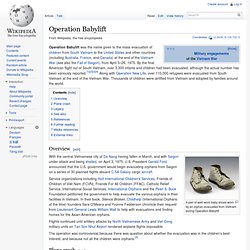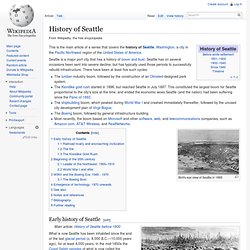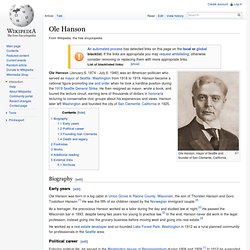

Operation Babylift. Operation Babylift was the name given to the mass evacuation of children from South Vietnam to the United States and other countries (including Australia, France, and Canada) at the end of the Vietnam War (see also the Fall of Saigon), from April 3–26, 1975.

By the final American flight out of South Vietnam, over 3,300 infants and children had been evacuated, although the actual number has been variously reported.[1][2][3][4] Along with Operation New Life, over 110,000 refugees were evacuated from South Vietnam at the end of the Vietnam War. Thousands of children were airlifted from Vietnam and adopted by families around the world. Overview[edit] A pair of well-worn baby shoes worn by an orphan evacuated from Vietnam during Operation Babylift With the central Vietnamese city of Da Nang having fallen in March, and with Saigon under attack and being shelled, on April 3, 1975, U.S. Plane crash[edit] Legacy[edit] See also[edit] Ticker Tape Parades. History of Seattle. Seattle is a major port city that has a history of boom and bust.

Seattle has on several occasions been sent into severe decline, but has typically used those periods to successfully rebuild infrastructure. There have been at least five such cycles: The lumber-industry boom, followed by the construction of an Olmsted-designed park system.The Klondike gold rush started in 1896, but reached Seattle in July 1897. American History Timeline: 1780-2010. Seattle General Strike. The Seattle General Strike of 1919 was a five-day general work stoppage by more than 65,000 workers in the city of Seattle, Washington, which lasted from February 6 to February 11 of that year.

Dissatisfied workers in several unions began the strike to gain higher wages after two years of World War I wage controls. Most other local unions, including members of the American Federation of Labor (AFL) and the Industrial Workers of the World (IWW), joined the walkout. Although the strike was non-violent and lasted less than a week, government officials, the press, and much of the public viewed the strike as a radical attempt to subvert US institutions.
Some commentators raised alarm by calling it the work of Bolsheviks and other radicals inspired by "un-American" ideologies, making it the first concentrated eruption of the anti-Red hysteria[citation needed] that characterized the Red Scare of 1919 and 1920. Ole Hanson. Ole Hanson, mayor of Seattle and founder of San Clemente, California.

Biography[edit] Early years[edit] Ole Hanson was born in a log cabin in Union Grove in Racine County, Wisconsin, the son of Thorsten Hanson and Goro Tostofson Hanson.[1] He was the fifth of six children raised by the Norwegian immigrant couple.[2] As a teenager, the precocious Hanson worked as a tailor during the day and studied law at night.[2] He passed the Wisconsin bar in 1893, despite being two years too young to practice law.[2] In the end, Hanson never did work in the legal profession, instead going into the grocery business before moving west and going into real estate.[3] He worked as a real estate developer and co-founded Lake Forest Park, Washington in 1912 as a rural planned community for professionals in the Seattle area.
Political career[edit] In 1918, Hanson was elected the thirty-third mayor of Seattle. The so-called sympathetic Seattle strike was an attempted revolution. Founding San Clemente[edit] Pony Express. Pony Express Advertisement Pony Express Postmark – 1860, Westbound The Pony Express was a mail service delivering messages, newspapers, mail, and even small packages from St.

Joseph, Missouri across the Great Plains, over the Rocky Mountains and the Sierra Nevada to Sacramento, California by horseback, using a series of relay stations. During its 18 months of operation, it reduced the time for messages to travel between the Atlantic and Pacific coasts to about 10 days.[1] From April 3, 1860, to October 1861, it became the West's most direct means of east–west communication before the telegraph was established and was vital for tying the new state of California with the rest of the country. Inception and founding[edit] Alexander Majors The idea of a fast mail route to the Pacific coast was prompted largely by California's newfound prominence and its rapidly growing population. Replica of Pony Express Messenger's Badge.
Revolution. World War II.